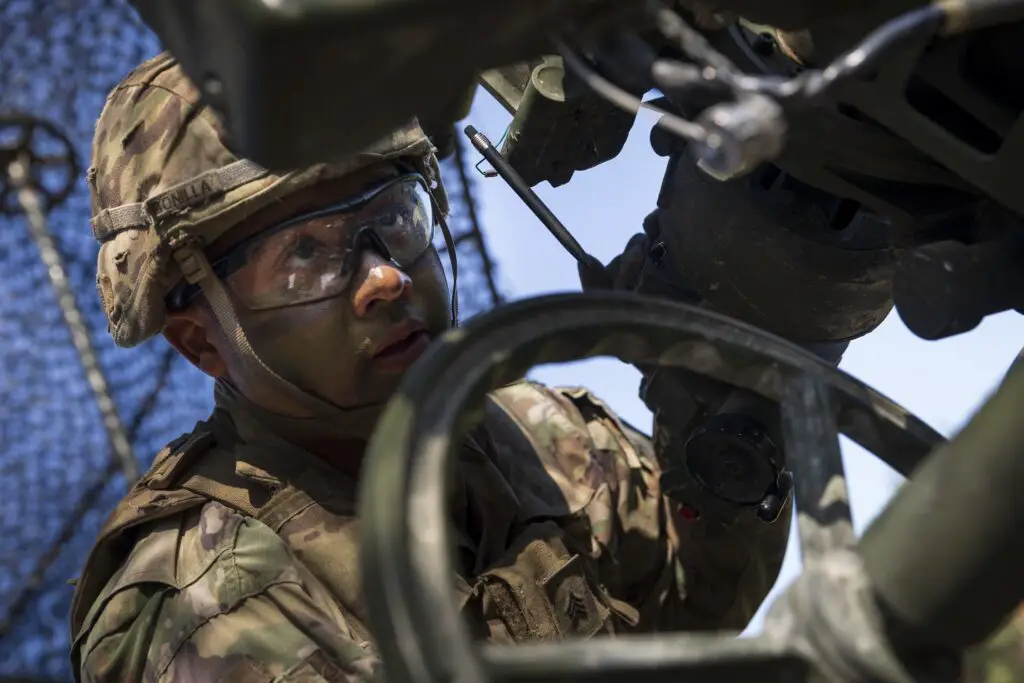Defending a nation isn’t just a random task. Military troops need to be equipped with essential materials needed to achieve set objectives both at the administrative level and the battlefield.
Military materials assist military activities, and they include ships, aircraft, self-propelled weapons, as well as repair parts, relevant spares, and support equipment, except for utilities, real estate, and installations.
Military materials are also known as materiel which refers to equipment that is used in the armed forces. They come in different shapes and sizes with each serving specific needs. Military materials are assigned different numbers and codes known as National Stock Number (NSN) for easy identification and tracking when necessary.
You will find that with the right military materials, operations will be made easier, and this will also reflect in the positive outcome of their activities. In this article, we will discuss some important things to know about military materials and how they are utilized.
Explaining the Armed Forces and Material Management
The military, also known as armed forces, is a fully armed, thoroughly organized group that is specifically intended for warfare. It is usually empowered and managed by a sovereign nation and its soldiers or members are easily identified by their distinctive uniform.
The military may include one or more branches such as an army, air force, navy, space force, coast guard, or marines. Its primary mission is generally described as the defense of the government and its interests against armed threats or warnings from external forces.
In general, the words military and armed forces are often used interchangeably, but in technical terms, a nation’s armed forces may encompass both its military and other paramilitary forces.
When referring to the military, the word “material” applies either to an army’s particular needs (except for manpower) to accomplish a particular aim and objective or the common needs of an active military force. Material in the service supply chain management pertains directly to supplies, equipment, and ammunition.
Material management involves the planning, directing, organization, control, evaluation, and coordination of reserves to guarantee the economical and efficient support of service operations. The terms material management, inventory control, material control, supply management, and inventory management can be used interchangeably.
Provisioning, requirements determination, cataloging, acquisition, maintenance, distribution, and disposal are also part of material management.
What Is a Military Equipment?

The expression “military equipment” refers to any vehicles, weapons systems, and other accessories or tools designed for use by the armed forces to assist in the operation of battlefield or combat missions.
Combat aircraft, combat vehicles, command ships, uniforms, and weaponry are all examples of this equipment. Materials and vehicles that were not designed for use on the battlefield, such as training aircraft, simulators, and test equipment, are considered as general property.
Service equipment is frequently transported to and utilized in harsh climates where there are no controlled storehouses. So, the packaging and labeling of this equipment must repeatedly adhere to strict technical specifications to help assure good delivery and proper usage.
They must adhere to certain specifications. This equipment must include the following features:
- It must be intended to have a functional lifetime of at least two years.
- It must retain its identity as a supply that is designed specifically for the armed forces.
- It is not meant for sale in the normal course of a business.
- It should be readily accessible for utilization for the intended purposes.
The armed forces receive a wide range of products and services, but they must all be made specifically for use in the military and designated for use as warfare, ammunition, or arms material.
The equipment supplied does not just assist soldiers in the execution of missions, but also assists with their day-to-day operations. This is achieved through the provision of products such as PPE or personal protective equipment, consumables, and surveillance.
Categories of Military Equipment
There are different categories of equipment that are shared by all five branches of the armed forces and some of them include:
Weapons
Weapons are built for martial services. They are made to eliminate occupied structures and vehicles, attack distant targets, and disrupt enemy positions. Squad automatic weapons (SAWs), rifles, grenade launchers, machine guns, and enhanced sniper rifles are among the weapons available. Ammunition is included in this category as well.
Tanks and Fighting Vehicles
Armored tanks and fighting vehicles, such as the Special Forces Ground Mobility Vehicle, the Bradley Fighting Vehicle (BFV), as well as the Army’s main combat tank, were intended to transport ground troops as well as provide firepower. They are heavily armored, can resist explosions, and can rapidly send in troops.
Vehicles That Provide Assistance
They are known as support vehicles. They are non-combat vehicles, such as the Heavy Expanded Mobility Tactical Truck (HEMTT), they transport soldiers and supplies from one location to another. Support vehicles are extremely powerful, versatile, and are capable of transporting anything from tanks to payload trailers.
To learn more about different kinds of military vehicles, you can read this article.
Aircraft
This category includes fixed-wing aircraft, helicopters, and unmanned aerial vehicles (UAVs). Each of these provides support to those on the ground by performing a variety of tasks such as light transport and supply, reconnaissance, search and destroy and assault. This aircraft is frequently armed with its weapons.
Submarines and ships
Submarines and ships are meant to transport small battle swimmer groups and equipment on both lands and at sea, ships designed for the warfare services serve as floating headquarters and assist with undersea operations.
Gears
GPS locators, uniforms, laser target finders, parachutes, night vision goggles, tactical vests, general-purpose masks, and extended climate clothing are examples of the equipment used by service members. Others include combat tents, spotting scopes, chemical agent detectors, individual first aid kits, and mine detectors.
All of these gears contribute to an individual’s ability to carry out their duties on a daily basis as well as to escape life-threatening circumstances on the field.
Specialized Electronics and Computer Applications
Specialized electronics are computer applications that serve as dismounted situational awareness systems for commanders. They are designed for use during battle to assist service members in their surveillance efforts as well as other operations they carry out on the field.
Military technology is fast evolving, and most nations are joining the queue. You can read more about the application of technology in military operations here: https://www.britannica.com/technology/military-technology
Conclusion
Military materials are essential to equip, operate, maintain and support warfare activities. They assist with executing missions and carrying out different daily operations on the field. In this article, we have outlined that military material is equipment that is used in the army as well as their different categories.





Comments are closed.